Invented by Di Lu, Adam Zerda, Becton Dickinson and Co
Medical devices play a critical role in patient care, ranging from surgical instruments to implantable devices. These devices must be sterilized to eliminate any potential pathogens and ensure patient safety. Traditionally, medical devices have been packaged in single-use, disposable materials that are discarded after each use. However, this approach has several drawbacks, including high costs, environmental concerns, and limited availability of certain devices in resource-constrained settings.
The concept of re-sterilization, or the ability to safely and effectively sterilize and reuse medical devices, has gained traction in recent years. Re-sterilization not only offers cost savings but also addresses environmental concerns by reducing the amount of medical waste generated. However, to enable re-sterilization, appropriate packaging methods are required to maintain the sterility of the device throughout its lifecycle.
Several packaging methods have been developed to enable re-sterilization of medical devices. One such method is the use of peelable pouches or wraps made from materials that can withstand multiple sterilization cycles. These pouches are designed to be easily opened and closed, allowing for the safe removal and reinsertion of devices during the re-sterilization process. Additionally, these pouches provide a barrier against contaminants and maintain the sterility of the device until it is ready for use.
Another packaging method gaining popularity is the use of rigid containers made from materials such as stainless steel or high-density polyethylene. These containers are designed to withstand repeated sterilization cycles and provide a secure and protective environment for the medical device. Rigid containers often feature locking mechanisms and tamper-evident seals to ensure the integrity of the sterilized device.
The market for packaging methods to enable re-sterilization of medical devices is driven by several factors. Firstly, the increasing prevalence of HAIs has led to a greater emphasis on effective sterilization processes. Re-sterilization offers an additional layer of protection against potential infections, reducing the risk to patients.
Secondly, the rising demand for cost-effective healthcare solutions is driving the adoption of re-sterilization practices. By enabling the reuse of medical devices, hospitals and healthcare facilities can significantly reduce their expenses associated with purchasing new devices. This cost-saving potential is particularly attractive for resource-constrained settings where access to medical devices may be limited.
Furthermore, the growing awareness of environmental sustainability is also contributing to the market growth. Re-sterilization reduces the amount of medical waste generated, thereby minimizing the environmental impact of healthcare operations. This aligns with the increasing focus on sustainable practices across various industries.
In conclusion, the market for packaging methods to enable re-sterilization of medical devices is witnessing significant growth due to the demand for cost-effective and sustainable solutions in the healthcare industry. The development of packaging methods that allow for re-sterilization not only offers cost savings but also addresses environmental concerns and enhances patient safety. As the healthcare sector continues to evolve, the adoption of re-sterilization practices is likely to become more widespread, further driving the market growth in the coming years.
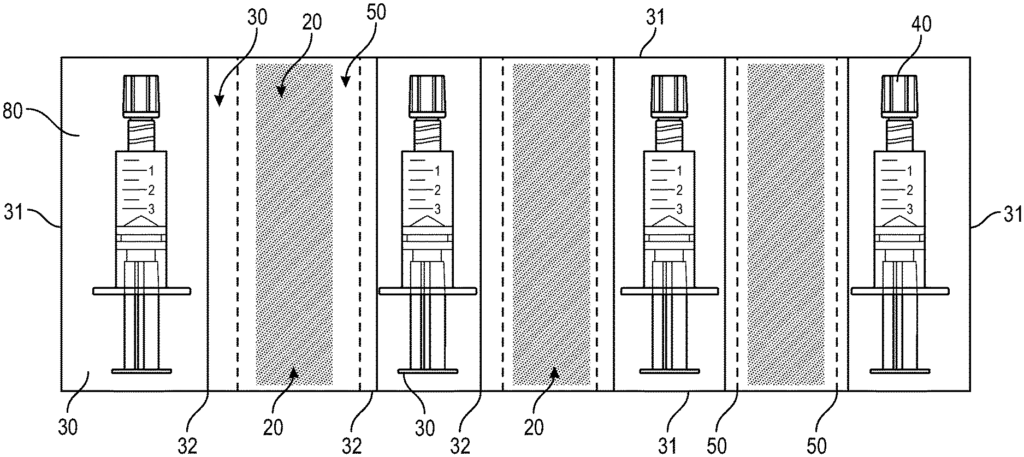
The Becton Dickinson and Co invention works as follows
A method for packaging pre-filled devices is described. The method includes producing a pouch with a front panel, a top panel and a compartment that can hold one or more medical device. At least one panel of the packaging has a portion made of a gas-permeable material. The gas permeable materials allows for gas to be passed through and contact one or more articles within the compartment, or allow gas to pass from the interior of the compartment out to the exterior of the container. After sterilization is complete, the pouch is closed and the gas-permeable material is removed. The sterilized medical device is then enclosed in an entirely gas-impermeable pouch.
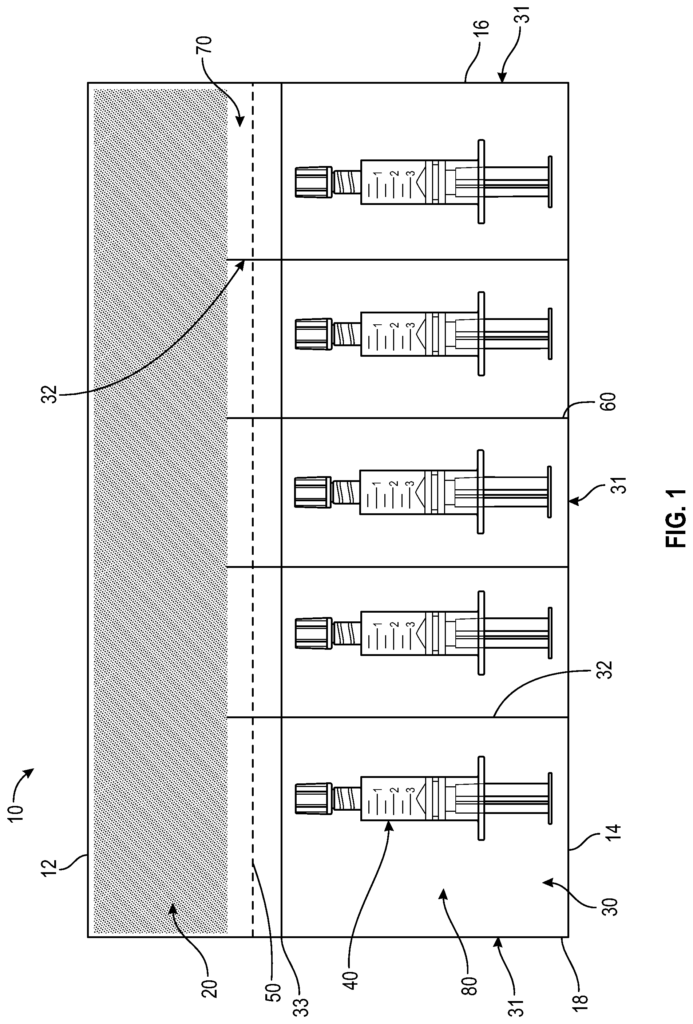
Background for Packaging Method to Enable Re-sterilization Of Medical Device
The packaging of sterile or clean articles, especially those that are useful in medical applications, is designed to maintain their sterility. Packaging for these articles should provide a barrier that prevents contaminants, such as microorganisms from entering the packaging.
The clinician must collect multiple components, including medical devices and medication before beginning the procedure. Kitting is the practice of assembling several components before a procedure. Many hospitals and independent companies offer a service that assembles these components, preparing them to be used in medical procedures.
In medical procedures, drugs or other injectable/infusible solution packaged in gas permeable containers, such as plastic ampules, drug vials, IV bags, IV pouches, and pre-filled flushing syringes, are often used. These may also be included in the procedure kit. Plastic ampoules, rubber-stopped drug vials, IV bags, pouches, and prefilled syringes are often filled with saline or other aqueous solution. Ethylene Oxide (EtO), is a common method used to prepare the kit before use in a sterilized field. Pre-filled saline solutions, plastic ampoules with rubber stoppers and drug vials are all packaged in gas-permeable packaging that is also permeable for EtO gas. EtO is used to sterilize medical instruments. Exposure of plastic ampoules or drug vials that have rubber stoppers to EtO gas can cause an unwanted effect, such as increasing the pH level of the contents. saline. To avoid this undesirable effect, plastic ampoules with rubber stoppers or drug vials, IV solution bags with pouches, or saline pre-filled plastic syringes are initially left out of the medical procedure kit, until the contents have been treated with EtO gas. In some cases, it’s important to have sterile, field-ready plastic ampoules with rubber stoppers for drug vials, IV bags, IV pouches, and/or a pre-filled flushing syringe. These items can also be sterilized after the kit has been assembled. There is therefore a requirement for a pre-filled flushing syringe that can withstand EtO sterilization, as well as plastic ampoules with rubber stoppers and IV solution bags or IV solution pouches.
There is therefore a need for a simple, straightforward, easy-to-manufacture medical device packaging method that will provide sterile, field ready, and kit packable products.
Aspects” of the invention relate to a packaging method for medical devices and, more specifically, to a packaging method for pre-filled medical instruments.
In a first aspect, the invention discloses a method for packaging and sterilizing chemically sensitive medical devices. The method includes: providing the medical instrument; providing a bag with a nonpermeable and gas-permeable head; placing the device in pouch; sealing pouch along gas-permeablehead, so that the nonpermeable remains accessible via the gaspermeablehead; sterilizing medical device using a sterilizing solution provided through gaspermeablehead to the nonpermeable room; sealing medical device within the nonpermeable
In one or more embodiments of the present invention the sterilizing agent may be steam, heat or nitrous oxide, or any combination thereof.
In one or more embodiments of the present invention the gas-impermeable portion is made from a laminate consisting of one or several plastic layers and aluminum foil.
The gas permeable header is made from air permeable plastic films, paper, or nonwoven in one or more embodiments of the invention.
In one or more embodiments of the invention, the medical devices include a plastic ampule, a drug vial with rubber stops, an IV solution bag, an IV solution pouch, or a pre-filled syringe. In one embodiment, the medical devices are pre-filled either with an aqueous or therapeutic solution. In one very specific embodiment, aqueous solutions are saline.
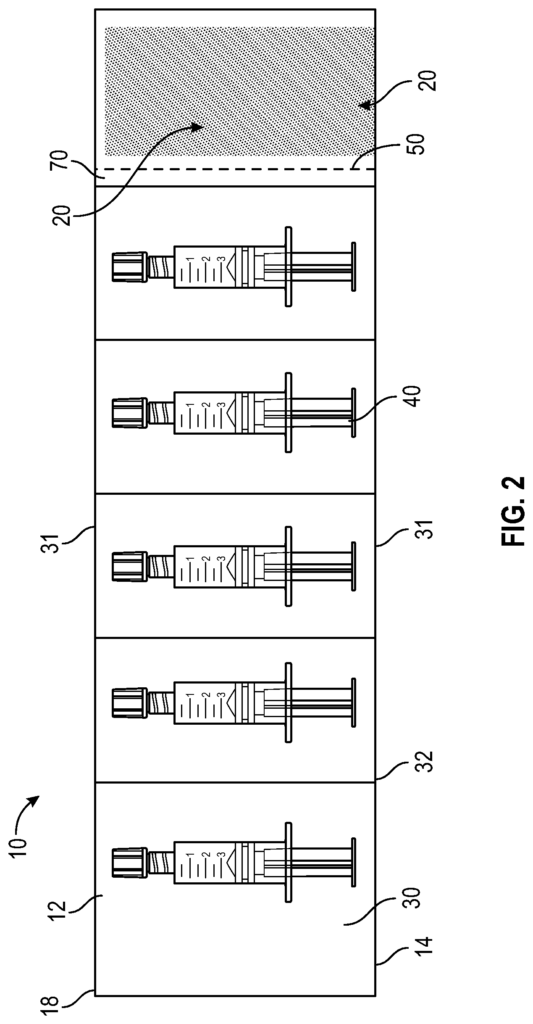
In one or more embodiments of the present invention the step of preparing a pouch with a non-permeable compartment and a header that is gas-permeable can be done by flow wrapping.
In another embodiment, the process of providing a pouch with a non-permeable compartment and a header that is gas-permeable involves blister packaging.
In another embodiment, the step to provide a pouch with a non-permeable compartment and a header that is gas-permeable can be done by a 3-sided or 4-sided bag.
The second aspect of this invention is a method for packaging and sterilizing chemically sensitive medical devices. It includes: providing a front-panel comprising a heat-sealable first film with a permeable gas section attached to an impermeable gas section; providing a rear-panel comprising
The third aspect of this invention is a method for packaging and sterilizing chemically sensitive medical devices. It includes: a front-panel comprising of a first heat sealable film with a permeable gas section attached to an impermeable gas section; a back-panel comprising of a second heat sealable film with a per
The fourth aspect of this invention is a method for packaging and sterilizing chemically sensitive medical devices. It involves: a front-panel comprising of a first heat sealable film with a permeable gas section attached to an impermeable gas section, a back-panel comprising of a second heat sealable film with a
The fifth aspect of this invention is a method for packaging and sterilizing chemically sensitive medical devices. It includes: providing a front-panel comprising a heat-sealable first film with a permeable gas section attached to an impermeable gas section; providing a rear-panel comprising a heat-sealable second
The following description of an exemplary embodiment of the invention should be taken as a reminder that the invention does not limit itself to the construction details or the process steps described. The invention can be embodied in other ways and practiced in different ways.
The following definitions will help you understand the terms that are used throughout this document.
The terms “package” and “packaging” are used in this document. “As used herein, the terms?package? Includes any material used to protect or wrap a medical product or device, such as IV solution bags and pouches, plastic ampoules with rubber stoppers or syringes. Packaging can be rigid, flexible or both. Medical packaging, pharmaceutical packaging and child-resistant packing are all included in packaging. “Medical and pharmaceutical packaging includes blister packs, flow-wrap and 3- or 4-sided pouches.
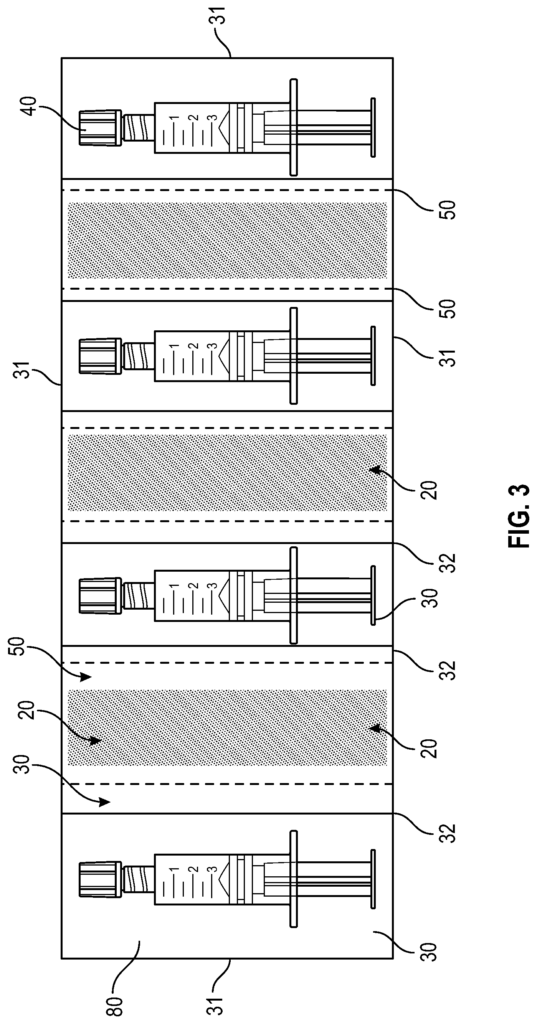
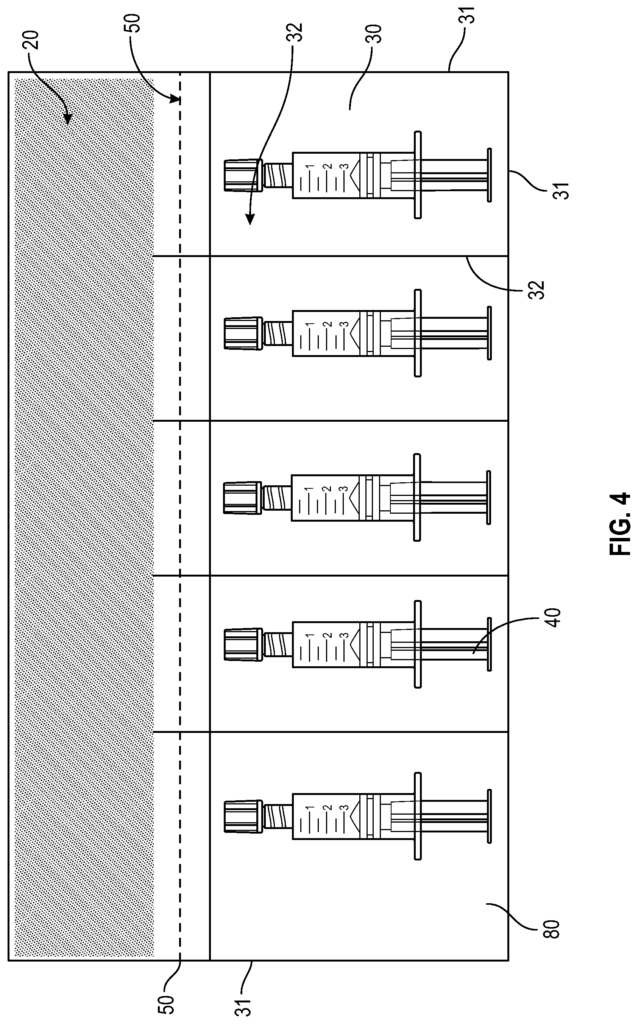
Click here to view the patent on Google Patents.
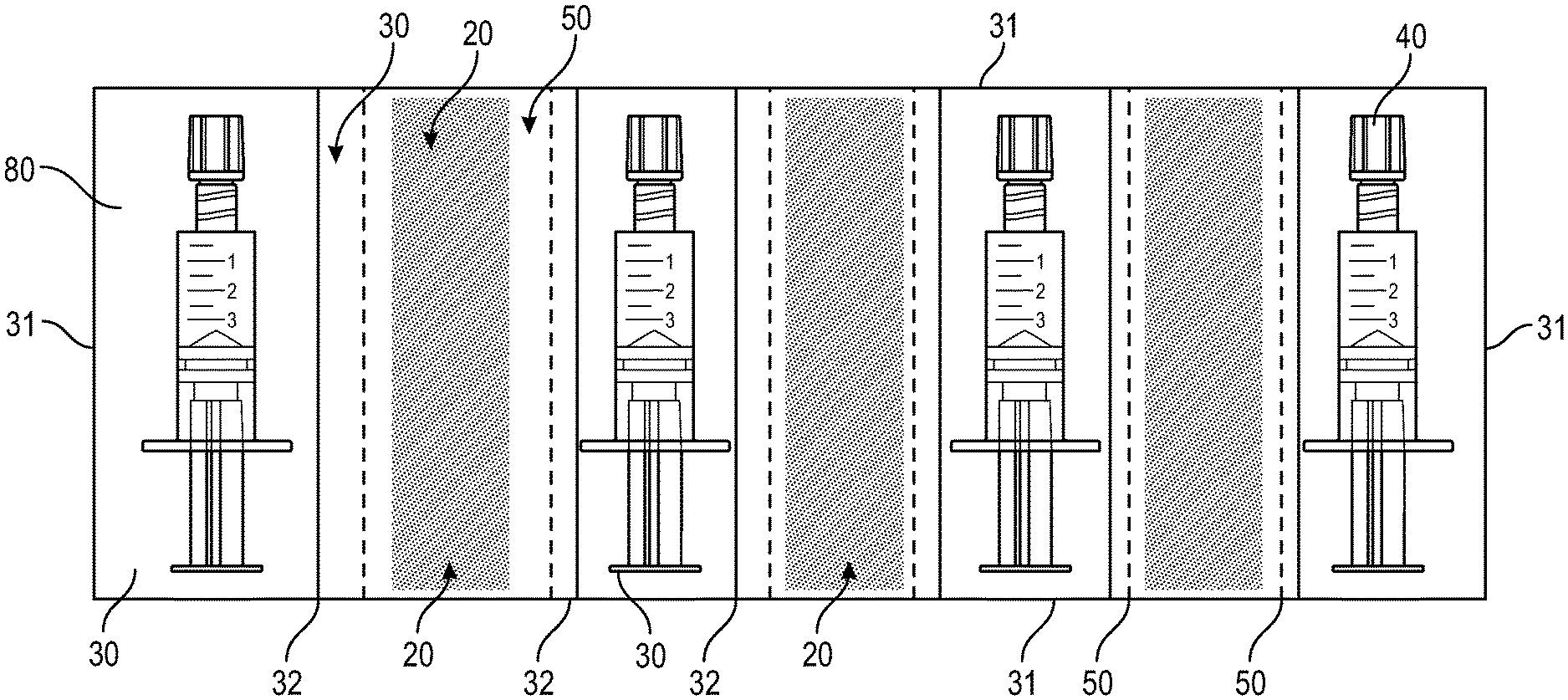
Leave a Reply